Featured on Google Play Home Page, Android Police, Yahoo News, CNET, Android Central, Droid-Life and more. AZ Screen Recorder is the best app to record the screen of your Lollipop. It does NOT require root access, no time limit , no watermark, ad free and very easy to use with one action to start and stop recording. This screen recording app will let you make beautiful screencast videos by providing every feature that you need in a simple and elegant user experience design. AZ screen recorder lets you record your screen to HD and FullHD videos and it is the only screencast app in the Android market that can be paused and resumed while recording. You can also record audio from the mic and it is automatically muxed into the screencast videos. That makes it very convenient to create tutorial, promotional video, comment about your game and gameplay or record video chat.
Smartphone shopping guide: March 2014
- Get link
- X
- Other Apps
We're back with our latest smartphone shopper's guide, and our first for 2014! In this edition we'll see which new devices announced at the MWC made the cut as good buys, next to some former flagships that have had their price reduced - without losing much value - to become sleeper picks in the upper midrange category.

As before, we're splitting up the guide by price category, starting with sub-€100 smartphones and going all the way to the top shelf stuff.
Here are the price categories we'll be looking at:
Price drops from many top manufacturers have resulted in a lot a movement between the ranks. The sub-€100 segment features some incredible deals on Android and Windows Phone smartphones, while the fresh batch of high-end models from MWC means some great deals on former flagships.
Before we jump in, a word on the technical side of things, and what it takes to make the cut. In terms of computing power, a dual-core processor is passable, but entry level phones make do with just one core (there are only a few of those in this guide though). Having a Krait-based Snapdragon dual-core chipset or just about any quad-core chipset is a guarantee for proper performance in the lowest price bracket.
For screens, anything under 200ppi is pretty poor (usually screens on budget phones), 200-300ppi is good but not great, and anything over 300ppi is eye-popping quality and differences get near impossible to spot with the naked eye. For cameras, you want at least 5MP for stills and 720p for video, though budget phones settle for 3 or less megapixel stills and VGA video (think 4:3 DVD quality).
Also, keep in mind that we're looking at off-contract prices. On-contract devices come cheap but get you saddled with an expensive plan for a year or two, which masks the true price of the device. Besides, carrier subsidies vary across markets, so since we are catering for a varied international audience, we can't really provide information that will be relevant to everyone.
We've also omitted any phones with limited market availability, as we want to make sure that you'll actually be able to buy the phones listed here in the coming month or two, rather than just read about them.
Under €100
The sub-€100 price segment is of particular importance in emerging markets. Dominated by low-cost feature phones in past years, it has also been swept up into the Android maelstrom. The cheapest droids can now be had for as little as €50, and oftentimes even less if brand recognition is not critical for you. That said, we've excluded brands that are only regionally available.
Windows Phone is going strong in this category, and Microsoft's great deal on the Nokia Lumia 520 continues to be one of the best offers on the table, particularly if you live in the US.
Dual-SIM phones are still very popular in markets where carriers keep prices high and the sub-€100 category will be of particular interest to people in those locations. Android clearly has the upper hand, although the Windows Phone 8.1 update slated for later this year adds dual-SIM support. We're likely still a ways away from seeing an affordable dual-SIM Lumia.
Nevertheless, the cheapest smartphone on offer is the aforementioned Lumia 520. This title used to belong to the now discontinued LG Optimus L3, but even then the 4" WVGA screen and dual-core Krait CPU with 5MP 720p shooter was unbeatable for the price. Add free offline navigation (single country), free Nokia Mix Radio streaming (with offline buffering) and a free Office suite, and you get the perfect budget phone for people on the go.
Note that in the US, the Lumia 520 can be had dirt cheap from the Microsoft store (off contract but locked to AT&T). It's pricier in Europe, but a recent discount moved it from the €100- €200 bracket to the sub- €100 category.
 Nokia Lumia 520 | Pros | Cons |
|
| |
| Review | ||
As for the cheapest droid, that honor belongs to the Samsung Galaxy Star. Although it has a smaller and lower-resolution display compared to the likes of the Alcatel One Touch T'Pop, the Samsung Galaxy Star features double the RAM and 4GB of internal memory, meaning a microSD card is no longer critical to proper use. Also, the Star runs on Android 4.1.2 though on this dated hardware it's arguable whether that's an advantage performance-wise over the older Android Gingerbread.
Feature phones will never get Snapchat or the next blockbuster app, which is the primary reason smartphones have had such a huge impact. If you've never had a smartphone, something like the Samsung Galaxy Star can open your eyes to new uses for your phone, without a big investment.
 Samsung Galaxy Star | Pros | Cons |
|
| |
Alcatel traditionally has a prominent spot in our sub-€100 category and the dual-SIM One Touch S'Pop is a prime example. It narrowly beats out the Samsung Galaxy Young Duos, having less RAM but a front-facing camera and larger battery. More importantly, it's also priced cheaper - by as much as €30 from some retailers.
 Alcatel One Touch S'Pop | Pros | Cons |
|
| |
The senior-most member of Alcatel's Pop family makes another appearance in our budget category as one of the more capable dual-SIM devices in this price range. Its robust screen lets it beat out the likes of the Samsung Galaxy Fame Duos and Sony Xperia E Dual, despite the latter getting a significant price cut since our last guide.
The One Touch M'Pop bears many similarities to the Lumia 520 with one key difference - the chipset is much weaker (single-core Cortex-A9 CPU, PowerVR SGX531, basically an iPhone 3GS-grade chipset). The upside is a decent 4" WVGA (480 x 800) display, Android 4.1 Jelly Bean and 5MP camera capable of 720p video recording. Keep in mind you don't get free SatNav, the chipset is lower grade and it only has 4GB of built-in storage rather than 8GB (there's a microSD card slot though).
 Alcatel One Touch M'Pop | Pros | Cons |
|
| |
Finally, one rather surprising addition to the sub-€100 segment is last years' darling of price-conscious Android fans, the Motorola Moto G. The device was a huge success thanks in large part to its unbeatable price, so much so that the 16GB version sold much better than its 8GB counterpart. Many US retailers appear to have a surplus of the latter model, and are unloading stock at incredibly low prices - as low as $99 for an unlocked model!
One important caveat is that you'll find yourself running low on internal memory fairly quickly with less than 8GB to spare after the OS has had its say, but the killer specs sheet make it too good an offer not to mention. A 4.5-inch 720p display with Gorilla Glass 3, 1GB of RAM, 5MP/1.3MP camera combo, quad-core 1.2GHz Snapdragon 400 CPU, and, of course, Android 4.4 KitKat and the fact that it will be among the first in line for future OS updates.
 Motorola Moto G (8GB) | Pros | Cons |
|
| |
| Review | ||
€100 - €200
This category has historically had the most converts from feature phones - and quite possibly the biggest turnover too. This time around, many devices that used to hover around the€200 mark have had significant price drops, and have shuffled things around.
The Samsung Galaxy Ace 2 still gets things rolling in this category, as the device continues to age well 2 years since launch - a true fossil when it comes to smartphones. Fortunately, competitive pricing and Andriod updates continue to breathe life into it. It has a 3.8" WVGA screen of acceptable sharpness.
The dual-core NovaThor Cortex-A9 CPU with Mali-400 GPU is not quite up to the task of running Android 4.1.2 smoothly but it's good enough. The 5MP camera with HD (720p) video recording matches the Lumia 520.
It's not up to par with the Lumia 520 in terms of processing and navigation options, but it's a good improvement over the Alcatel M'Pop from the previous section for just a bit more cash.
 Samsung Galaxy Ace 2 | Pros | Cons |
|
| |
| Review | ||
Nokia's first Android experiment in the form of the Nokia X is about as stable as a newborn giraffe, but it's priced very competitively for what it brings to the table. The device runs Android 4.1 with a distinct Windows Phone feel to it, and features Nokia's proprietary HERE maps and navigation suite as an added bonus. Unfortunately, you won't have access to the Google Play store, and will instead have to rely on third-party stores for your app needs.
Otherwise, the combo of 4" WVGA display and dual-core 1GHz processor for not much more than some budget offerings is enticing - especially if you're into fiddling around with settings and you know your way around side-loading hard-to-find apps. The somewhat low RAM wasn't necessarily a problem with Windows Phone Nokia's, but here it's a different story, and may result in some added slowdowns.
 Nokia X | Pros | Cons |
|
| |
| Hands-on | ||
The Nokia Lumia 525 is a successor of the Nokia Lumia 520, and with the exception of doubling up the RAM to 1GB, it's virtually the same device. It sports the same 4" WVGA screen and dual-core Krait CPU with 5MP 720p shooter. There's also free offline navigation for one country, free Nokia Mix Radio streaming (with offline buffering) and a free MS Office suite.
 Nokia Lumia 525 | Pros | Cons |
|
| |
| Hands-on | ||
The Sony Xperia M has been sufficiently discounted to beat out our previous recommendations and qualifies thanks to its 4-inch screen of 480 x 854 pixels resolution, 5MP camera capable of 720p video, and dual-core 1GHz Krait CPU with robust Adreno 305 GPU.
Sony recently announced its successor, the Xperia M2, which means the Xperia M will likely be discontinued by the time our next guide rolls around. If the Xperia M catches your eye, act quickly.
 Sony Xperia M | Pros | Cons |
|
| |
| Review | ||
When it comes to dual-SIM capabilities in this price range, few can match the 4.5" qHD screen and quad-core Cortex-A7 CPU of the Acer Liquid E2 Duo. Acer has dropped the price to match competition from the likes of the Sony Xperia M dual and Samsung Galaxy Core Duos, so the Liquid E2 Duo makes it into our guide for a second consecutive time.
The E2 Duo runs very decently and has an 8MP camera that records 1080p video (better than the Motorola Moto G's camera). Plus there's a microSD card slot, a relatively big 2,000mAh battery, DTS sound enhancement and rear stereo speakers to sweeten the pot.
 Acer Liquid E2 Duo | Pros | Cons |
|
| |
The Lumia 625 is hardly anything more than a Lumia 520 with a bigger screen and flashier colors. It has a big 4.7" screen of only WVGA resolution, which means low sharpness. The dual-Krait processor and 512MB of RAM are also less than you would expect of a phone this size. However, this is the cheapest phone with a screen this large, and has the usual free navigation (for one country) and music goodies from Nokia and Office integration from Microsoft. A microSD card slot means cheap storage for videos and music too.
 Nokia Lumia 625 | Pros | Cons |
|
| |
| Review | ||
The Samsung Galaxy S II Plus has also found its way into this price segment. The Plus edition of the former flagship brings a 4.3-inch Super AMOLED Plus display of WVGA resolution, 8GB of expandable storage and 1GB of RAM. Its 8MP shooter is capable of 1080p video, and a 2MP front-facer to boot. It has recently been privy to the Android 4.2.2 Jelly Bean update, and we could even see it in KitKat land at some point.
 Samsung Galaxy S II Plus | Pros | Cons |
|
| |
| Review | ||
Last time around, Motorola's Moto G dominated this segment, with its great price and competitive package. Its price outside the US has, however, gone up, perhaps due to low supplies or high demand. Nevertheless, it's still within the €100-€200 price segment, and still offers its incredibly enticing package: a quality 4.5" 720p screen with quad-core processor to boot. Sure, these are Cortex-A7 cores, but our tests show it performs admirably.
It's fairly compact (though a bit thick) and it will be getting fairly quick updates (not quite Nexus or Google Play Edition, but still). The camera is not spectacular, but 5MP/720p is a fairly good combo. Its only real chink in the armor is its non-expandable storage, which means we highly recommend the 16GB version despite the higher cost.
When all's said and done, we still consider this the new baseline Android phone - anything more expensive better have at least one key feature to top it off (e.g. a better camera or more storage) and anything not up to par with the Moto G better be cheaper.
 Motorola Moto G (16GB) | Pros | Cons |
|
| |
| Review | ||
€200 - €300
Although the ripple effect from the Moto G is still being felt, the €200-€300 price bracket still remains the sweet spot for smartphones. The Moto G is not without its flaws and these phones correct them, without breaking the bank. Considering your phone will be with you for at least a couple years, the extra €100 spread out over the period isn't much if it will save you headaches or make you happier. You know, not having to delete files to make room, taking advantage of a better camera or bigger screen - whatever fits your needs.
The first such device is the LG Optimus L9 II. It packs a 4.7" 720p screen and a dual-core Krait processor, with expandable storage, NFC and an IR blaster further sweeten the pot - it's essentially a Moto G on steroids with expandable storage and a better camera. It doesn't have the quad-core CPU, but it does have two Krait cores and the NFC and IR-blaster are great extras. The phone also measures 9mm thick, in case the 11.6mm of the Moto G are too much.
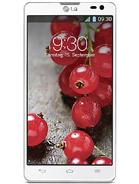 LG Optimus L9 II | Pros | Cons |
|
| |
The Sony Xperia T has a 4.55" 720p screen, but what it has over the Moto G is a 13MP camera with 1080p video recording and expandable 16GB of storage, which could well justify the price premium. The screen viewing angles aren't great and the software updates will not be as quick, but Sony has a decent history of updating its phones.
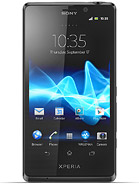 Sony Xperia T | Pros | Cons |
|
| |
| Review | ||
The Sony Xperia C is targeting users after a cheap phone with a large screen and dual-SIM connectivity. The screen has only qHD resolution so it's nothing to rave about, but the priority here is size rather than pixel density. The phone also has a quad-core Cortex-A7 based processor, 8MP/1080p camera, expandable storage and a robust 2,390mAh battery.
 Sony Xperia C | Pros | Cons |
|
| |
| Review | ||
The price of the Sony Xperia V has dropped significantly since our last guide, and continues to be the cheapest water-resistant phone that's worth your money. It obviously has that over the Samsung Galaxy S4 mini, plus a 13MP still camera, and a 4.3" 720p screen to match the HTC One mini. The expandable storage and LTE are nice touches, too.
Oh, and this also is the cheapest phone you'll find in our guide that has LTE connectivity.
 Sony Xperia V | Pros | Cons |
|
| |
| Review | ||
Speaking of mini's, the Samsung Galaxy S4 mini is one of the more compact smartphone offerings in this segment. It's barely bigger than an iPhone 5s but manages to squeeze a 4.3" screen in. It has qHD resolution so it's not Retina-sharp, but it's a Super AMOLED, which has its share of benefits.
The Snapdragon chipset with two Krait cores running at 1.7GHz and 1.5GB of RAM and the Adreno 305 GPU provides plenty of horsepower for the class and the phone runs a fairly recent Android 4.2 version. The 8MP camera with 1080p video capture stacks up very well against similar cameras.
The Samsung Galaxy S4 mini is also available in LTE and dual-SIM versions too, but those fetch a higher price.
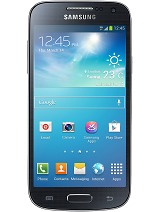 Samsung Galaxy S4 mini | Pros | Cons |
|
| |
| Review | ||
Like the S4 mini, the Samsung Galaxy S III has also got cheaper, and the former flagship offers an enticing package despite officially being two generations old now. It's fairly compact for its 4.8" Super AMOLED screen with 720p resolution and has a very good 8MP/1080p camera.
The Exynos chipset with four Cortex-A9 CPU cores and Mali-400 is closer to the quad Cortex-A7 performance than to high-end Snapdragons, but it is still good enough.
The Galaxy SIII also got updated to Android 4.3 recently. The 2,100mAh battery may not be huge by today's standards, but you'll get a decent run out of it. The 16GB of expandable storage gives you plenty of room for multimedia.
 Samsung Galaxy S III | Pros | Cons |
|
| |
| Review | ||
The Huawei Ascend P6 has a stunningly thin 6.2mm body and pleasant metallic back. Design is strong with this one, even if it takes the iPhone obsession a bit too far perhaps. It has a 4.7" 720p screen, Huawei's quad Cortex-A9 chipset and an 8MP camera with 1080p video capture. Despite the slender build, the P6 has a decent 2,000mAh Li-Po battery and even expandable storage.
The Huawei Ascend P6 is thin, light and handsome, made of premium materials, plus the custom Emotion UI is highly customizable and iOS-like at its base. Better still, it's not a huge financial commitment to try (it's well below even the iPhone 5C).
 Huawei Ascend P6 | Pros | Cons |
|
| |
| Review | ||
The €200-€300 bracket also brings the first phablet in this guide. We told you this is the sweet spot. The Huawei Ascend Mate has a big 6.1" screen of 720p resolution, a Huawei-made chipset (quad-core Cortex-A9) and runs Android 4.1, upgradeable to 4.2. The Mate has a huge battery - 4,050mAh - which performed great in our battery test.
The phablet also packs an 8MP camera with 1080p video capture and 8GB of expandable memory. Phablets are a growing segment that straddles the space between phones and 7" tablets and offer plenty of screen real estate for browsing, document editing and gaming alongside impressive battery life.
 Huawei Ascend Mate | Pros | Cons |
|
| |
| Review | ||
The Sony Xperia SP is very similar to the Optimus L9 II but with better graphics and LTE. Better yet, it's close to the Moto X, but that device is still priced too high internationally for us to recommend it. The 4.6" 720p screen is nice despite its low contrast and the dual-core Krait processor is paired with a powerful Adreno 320 GPU. There are no always-on voice functions, but Sony is already planning the Android 4.4 update and there's a microSD card slot.
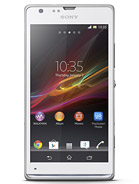 Sony Xperia SP | Pros | Cons |
|
| |
| Review | ||
The Oppo R819 is one of our favorite phones from the up-and-coming maker and one of the few relatively high-end dual-SIM smartphones. It's delightfully thin at 7.3mm and has a good 4.7" 720p screen. The quad-core Cortex-A7 processor proved powerful enough and the 8MP camera with 1080p video capture is nothing to sneeze at. The storage is fixed at 16GB, which is the one major complaint we have about this phone.
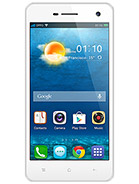 Oppo R819 | Pros | Cons |
|
| |
| Review | ||
This category used to hold the Nexus 4, but that's not such a great deal in places with no access to Google's online Play Store for Devices - the Moto G is quite close in terms of specs at a noticeably lower price, plus if you want a great Nexus experience you should save up for a Nexus 5 (check out the next chapter).
The LG Optimus G is the former LG flagship and the basis for the Nexus 4. It resolves two of the more common complaints people had with the Nexus 4 by adding 32GB of built-in storage and LTE connectivity and you also get a superior 13MP / 1080p camera. Better yet, thanks to a price drop, the device has climbed down from the higher price segment.
You do, however, lose the pure Android version with timely updates. The Optimus G did recently get a 4.2 update and an official 4.4 build is on the way which, combined with its most recent price cut, make it a very compelling option.
 LG Optimus G | Pros | Cons |
|
| |
| Review | ||
The recently-released Lumia 1320 is the second phablet in this section, and among Nokia's first offerings with a screen this big. The 6" phablet offers the same LTE connectivity as the company's former flagship, the Lumia 920, but bumps the dual-core CPU up to 1.7GHz and the Adreno GPU is now of the 305 variety. Although the internal storage was reduced, there is now a microSD card slot.
Unfortunately, Nokia have installed a standard 5MP shooter capable of 1080p video rather than the PureView-enabled variant found on the 920.
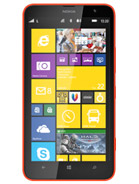 Nokia Lumia 1320 | Pros | Cons |
|
| |
| Review | ||
Previously, this section ended with the Nokia Lumia 920. Now, thanks to a healthy price drop, we're strongly recommending its Lumia 925 counterpart. The Lumia 925 is essentially a Lumia 1020 at half price, with the exception that you lose the massive 41MP sensor and some quality in the 1080p videos. It still has optical image stabilization though - the cheapest phone that does.
Better yet, the Lumia 925 fixes two of the major issues we had with the Lumia 920 - bulkiness and lack of AMOLED display. The design team at Nokia did a great job with the device, as the Lumia 925 shaves off a good amount of weight, and the aluminum unibody feels and handles great.
Apart from the camera, the specs of the Lumia 925 and 1020 are virtually identical and you'll get the same software. Plus, the price difference between the two is big enough to buy a real camera - the Lumia 1020 is more than twice the price of the 925.
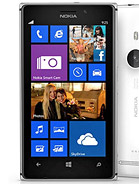 Nokia Lumia 925 | Pros | Cons |
|
| |
| Review | ||
€300 - €400
We're now on flagship territory. True, not cutting edge or top-of-the-line models, but many former flagships and versions thereof can be found in this price range. Still, most people won't need to look further up the pricing ladder, unless they are specifically looking for the latest and greatest, or a specific feature that phones in this bracket do not offer.
The Sony Xperia Z is just over a year old at this point, but it's still an excellent phone - it has a beautiful glass-and-aluminum design and is one of the few water-resistant devices. The Snapdragon S4 Pro chipset is getting a little long on the tooth compared to more capable offerings, and the 13MP / 1080p camera isn't up to par. The screen has poor viewing angles but is decent otherwise. Also, the water-proofing didn't prevent Sony from putting in a microSD card slot.
Its successor, the Xperia Z1, improves on the camera, chipset, display and even battery and water-proofing rating, and the just-announced Xperia Z2 flagship makes it look downright ancient. Still, the Xperia Z has a lot to offer for the price.
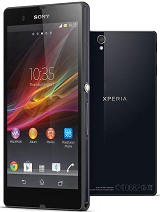 Sony Xperia Z | Pros | Cons |
|
| |
| Review | ||
The Sony Xperia Z Ultra phablet is a stunner - a huge 6.4" 1080p screen and a 6.5mm thin glass and metal body with an IP58 water-proofing to boot. It has a powerful Snapdragon 800 chipset and as of recently a Google Play Edition (you don't have to buy one; the ROM should soon be available for all Z Ultra owners with some tech skills to flash).
The Xperia Z Ultra is probably too big to comfortably carry along unless you have a bag, but it's one of the most powerful phablets around and the only one that wouldn't mind a trip to the pool. This is the second consecutive price segment the Z Ultra has slipped through, dropping by yet another €100 since the previous installment of our shopping guide.
 Sony Xperia Z Ultra | Pros | Cons |
|
| |
| Review | ||
The Galaxy S4 needs no introduction - Samsung has spent tons of money on ads and over 40 million people have already bought one. The plastic design isn't everyone's favorite, but it fits a 5" display in the footprint of last year's 4.7" flagships.
It's powered by a Snapdragon 600 chipset, which until recently was the best in Android-land (and is clocked higher than other S600s), an excellent 13MP / 1080p camera and tons of proprietary features (detecting a hovering finger, split-screen multitasking).
One important tip - the Galaxy S4 also comes in an Exynos 5 version. Samsung has tuned both to have similar performance overall, but since the Exynos model omits LTE you might find it cheaper in some places, which makes it a solid option in markets without a 4G network. On the other hand, the Snapdragon 600 version is also compatible with official pure Android releases - you don't need the Galaxy S4 Google Play Edition for that.
As a side note, Samsung has released a Black Edition Galaxy S4, which does away with the plastic rear panel in favor of the faux leather one introduced with the Galaxy Note 3. If you can find it without too much of a price premium, it adds some much needed quality to an otherwise tired design.
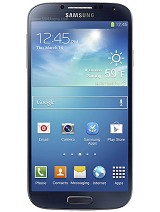 Samsung Galaxy S4 | Pros | Cons |
|
| |
| Review | ||
In case the Ascend Mate and Xperia Z Ultra phablets weren't good enough, have a look at the LG Optimus G Pro. It comes close to current phablets with a 5.5" 1080p screen, Snapdragon 600 chipset, 13MP camera and 3,140mAh battery.
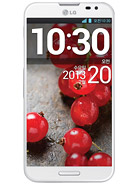 LG Optimus G Pro | Pros | Cons |
|
| |
| Review | ||
The Nexus 5 has a 5" 1080p screen and a more powerful chipset than the S4 and it runs pure, unsullied Android, which is highly desirable in some circles. The 8MP/1080p camera has optical image stabilization too, one of the few Android cameras that do.
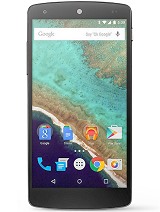 Nexus 5 | Pros | Cons |
|
| |
| Review | ||
€400 - €500
Now, on to some premium gadgets - and priced accordingly - even though this isn't the top tier category. Still, you need to have a good reason to go above €500 as these devices will fulfill almost everyone's needs with this year's cutting-edge features.
The HTC One is among the most beautiful Android phones at the moment (if not the most, depending on who you ask). It has a great 4.7" 1080p screen and a 4MP UltraPixel camera with optical image stabilization. Throw in the fast Snapdragon 600 chipset, stereo speakers on the front and a pure Android option like the Galaxy S4 and you have a strong contender.
It will certainly draw people who dislike the plastic build of most of Samsung's phones along with audio buffs (the One has great audio hardware). The imminent release of the One's successor - the All New One, as HTC like to call it - should push the price of this device down even further. We wouldn't be surprised to see it in the lower bracket in our next shopping guide.
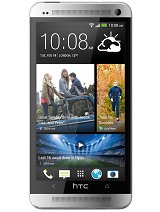 HTC One | Pros | Cons |
|
| |
| Review | ||
Sony's Xperia Z1 Compact was launched as one of the first capable compact smartphones, and is truly an impressive feat of engineering as Sony managed to squeeze almost everything from the Xperia Z1 flagship into a much smaller body. You get a 4.3-inch 720p display, quad-core 2.2 GHz Snaprdragon 800 CPU with Adreno 330 GPU, 16GB of expandable storage alongside 2GB of RAM, and Sony has already updated it to the latest Android 4.4 KitKat build.
The Z1 Compact features the big by smartphone standards 1/2.3" 20.7MP sensor. That's point-and-shoot camera territory (including the Samsung Galaxy S4 zoom) but it fits in a slender 8.5mm body. It produces impressive shots (check out our 6-way camera shootout) and has some interesting proprietary camera features (how about streaming video to Facebook live?). As an added bonus, both it and the 2MP front-facer are capable of 1080p video at 30fps.
The device truly worthy of its flagship name, but if compact size isn't critical to you, the bigger Xperia Z1 is priced only slightly higher...
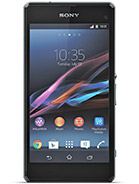 Sony Xperia Z1 Compact | Pros | Cons |
|
| |
| Review | ||
Speak of the devil, the Xperia Z1 brings the exact same package as its Compact sibling, but has a big 5-inch display of 1080p resolution. Sony's most recent batch of impressive camera features debuted with the Xperia Z1's 20.7MP Exmor sensor, and the battery is more robust than what's found the Compact to accommodate the larger screen and resolution.
Sony recently announced its Xperia Z2 flagship, and devices have just started becoming available to retailers. This bodes well for the likes of the Z1 and Z1 Compact, as both should continue to drop in price as the Z2 starts hitting retailers on a larger scale.
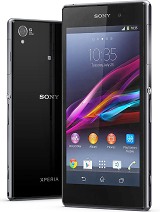 Sony Xperia Z1 | Pros | Cons |
|
| |
| Review | ||
We wouldn't recommend LG G2's 16GB storage as those HD videos (especially 1080p @ 60fps) and advanced 3D games will deplete it in no time, but you can now get a 32GB for a pretty great price. And if not for the video or games, the beautiful screen, powerful chipset and 13MP OIS camera will go to waste.
And the LG G2 does have an amazing 5.2" screen with 1080p resolution that fits in the footprint of the Galaxy S4 and HTC One. It also packs a Snapdragon 800, a 13MP camera with optical image stabilization and a lasting 3,000mAh battery.
The design might not be to everyone's favorite, and the rear buttons are especially unusual. It's also plastic, which isn't up to par with the HTC One or Xperia Z1. Make no mistake though, the LG G2 is one of the best Android smartphones available at the moment.
 LG G2 (32GB) | Pros | Cons |
|
| |
| Review | ||
The Nokia Lumia 1020 is the true successor of the Nokia 808 PureView and has the most amazing camera ever found on a mobile phone. Better yet, a price cut has brought it down to the sub-€500 price range. Its huge 1/1.5" sensor with a whopping 41MP resolution creates amazing shots and by supersampling to 5MP, sharing is easy. Nokia is offering a ton of proprietary camera features like lossless digital zoom, manual controls and the Refocus app. Oh, and the 1020 is the only phone with a powerful xenon flash. The audio recording for videos is top notch too.
You do have to deal with the protruding camera hump on a phone that's not slender to begin with, and Windows Phone 8 could be a plus or a minus depending on your preferences. It has a decent 4.5" WXGA AMOLED screen and dual-core Krait chipset, but Androids are wholly unimpressed. The 2,000mAh sealed battery isn't great either, but you can get the grip accessory for an extra 1,020mAh and a more comfortable hold on the phone (albeit with added bulk).
This one is all about the camera as it takes pictures like no other phone. Point-and-shoot cameras have a tough time competing, too. But if not for the camera, we can't justify double the price over the Lumia 925.
 Nokia Lumia 1020 | Pros | Cons |
|
| |
| Review | ||
The Samsung Galaxy Note 3 is the third iteration of the highly successful phablet series with an S Pen stylus. Now that it's firmly in the sub-€500 category, it's the phablet to get. It has a beautiful 5.7" 1080p Super AMOLED screen and is powered by a Snapdragon 800 chipset, both of which make split screen multitasking a real treat. The S Pen also enables other multitasking options - it makes note taking and searching that much easier, and packs even more proprietary features than the Galaxy S4.
The 13MP camera did okay for stills and is absolutely amazing for video - it can record stunning 2160p video and excellent 1080p @ 60fps clips (better than the LG G2). For video, it has digital zoom that rivals the Lumia 1020s optical zoom.
The Galaxy Note 3 breaks away from Samsung's traditional plastic design - it's still plastic, but the faux-leather back is very convincing and really classes up the place. By the way, the device's size hasn't changed since the Note 2, despite the increase in screen diagonal.
The Samsung Galaxy Note 3 is targeted at business people (who will appreciate KNOX enterprise security) and power users who will love the huge mountain of features. If we had to go over them all, we'd have to copy and paste the review here.
Just make sure you're getting the N9005 version with Snapdragon 800 CPU - the N9000 with Exynos 5 lacks LTE and 2160p video capture.
 Samsung Galaxy Note 3 | Pros | Cons |
|
| |
| Review | ||
€500 and above
Call this the "money's no object" category, where only the best of the best will do. Phones here didn't make the cut by virtue of their value for money, but rather their celebrity status. This is the category that typically sees the least movement - other than a few phones dropping in the lower price bracket, it's usually the same old faces.
Microsoft shed the screen resolution and chipset limits with WP8 GRD3 and Nokia took advantage with the Lumia 1520. It's a 6" phablet with a 1080p screen, a Snapdragon 800 chipset and a 3,400mAh battery - basically, as good as any Android flagship. More importantly, the 1520 saw one of the biggest drops in price in this category, and we do expect to find it for less than €500 by our next guide.
It's a smaller sensor (1/2.5") with half the resolution, but it still has quality ZEISS optics and optical image stabilization. No xenon flash, but the lossless digital zoom is on board (due to the lower sensor resolution, it's not as long as that on the 1020) and so are the quality microphones for best-in-class audio capture for the 1080p videos.
It's not an exaggeration to say that the Lumia 1520 is the best device Nokia has made. But it's big and heavy - not the biggest phablet around, but perhaps too big for a general device. At least it's not solely dependent on its camera for success like the Lumia 1020.
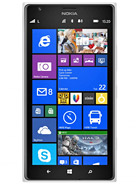 Nokia Lumia 1520 | Pros | Cons |
|
| |
| Review | ||
Sony is about to out its latest Xperia flagship, and it's a doozy. From our time with the device at its MWC launch, we were impressed by its blazing fast Snapdragon 801 chipset with quad-core 2.3GHz processor and IPS LCD display that for once didn't suffer from poor contrast when looked at from an angle - a first for a Sony flagship. The camera sensor remains the same as the former Z1 flagship, but is now capable of 2160p@30fps video recording and has a boatload of software extras.
Additionally, you still get the IP58 dust and water resistance, while the memory and battery capacity have been boosted to make it even faster while lasting longer. The addition of dual front stereo speakers was also a nice touch. Overall, the Xperia Z2 is easily among the best flagship smartphones this year, and will be among the first available when it launches at the end of the month.
 Sony Xperia Z2 | Pros | Cons |
|
| |
| Hands-on | ||
We've finally reached the Apple iPhone 5s price point. Don't get us wrong, it's an amazing smartphone but the pricing gets harder to swallow each passing year, especially when you can have the ever improving Android and WP8 phones at half the cost.
It's a gorgeous device no doubt, with a thin and light aluminum body and people really seem to enjoy the new gold color option.
The 8MP camera shows improvements over the iPhone 5, but it wasn't even able to match the last gen flagships let alone the one just around the corner. The new Apple A7 chipset is a beast (don't be fooled by core count and clock speed, it's a new architecture) and iOS 7 brought some much needed improvements. The TouchID fingerprint sensor is also something that might draw you this way, but unless you are deeply invested into the ecosystem value for money isn't among the smartphone's strong points.
To put things in perspective, a 32GB iPhone 5s costs as much as two Galaxy Note 3 units (each with 32GB storage plus microSD card slot).
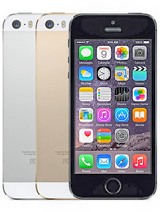 Apple iPhone 5s | Pros | Cons |
|
| |
| Review | ||
- Get link
- X
- Other Apps
Popular posts from this blog
Featured on Google Play Home Page, Android Police, Yahoo News, CNET, Android Central, Droid-Life and more. AZ Screen Recorder is the best app to record the screen of your Lollipop. It does NOT require root access, no time limit , no watermark, ad free and very easy to use with one action to start and stop recording. This screen recording app will let you make beautiful screencast videos by providing every feature that you need in a simple and elegant user experience design. AZ screen recorder lets you record your screen to HD and FullHD videos and it is the only screencast app in the Android market that can be paused and resumed while recording. You can also record audio from the mic and it is automatically muxed into the screencast videos. That makes it very convenient to create tutorial, promotional video, comment about your game and gameplay or record video chat.
Mstar Android TV firmware tools
Truecaller – Caller ID & Block (Premium) 11.46.7 Apk + Mod Android
250 million people trust Truecaller for their communication needs, whether it’s for caller ID or for blocking spam calls and SMS. It filters out the unwanted, and lets you connect with people who matter. With a community-based spam list updated by millions of users worldwide, Truecaller is the only app you need to make your communication safe and efficient. Smart Messaging: Free Chat with your friends and family on Truecaller Automatically identify every unknown SMS Automatically block spam and telemarketing SMS Block by name and number series Powerful Dialer: The world’s best Caller ID will identify anyone calling you Block spam and telemarketers See names of unknown numbers in the call history Call Recording – Record important phone calls and save them to your phone (not supported on Android Pie) Flash messaging – Share location, emoji & status in a flash to your friends Backup call history, contacts, messages and settings to Google Drive
Comments
Post a Comment